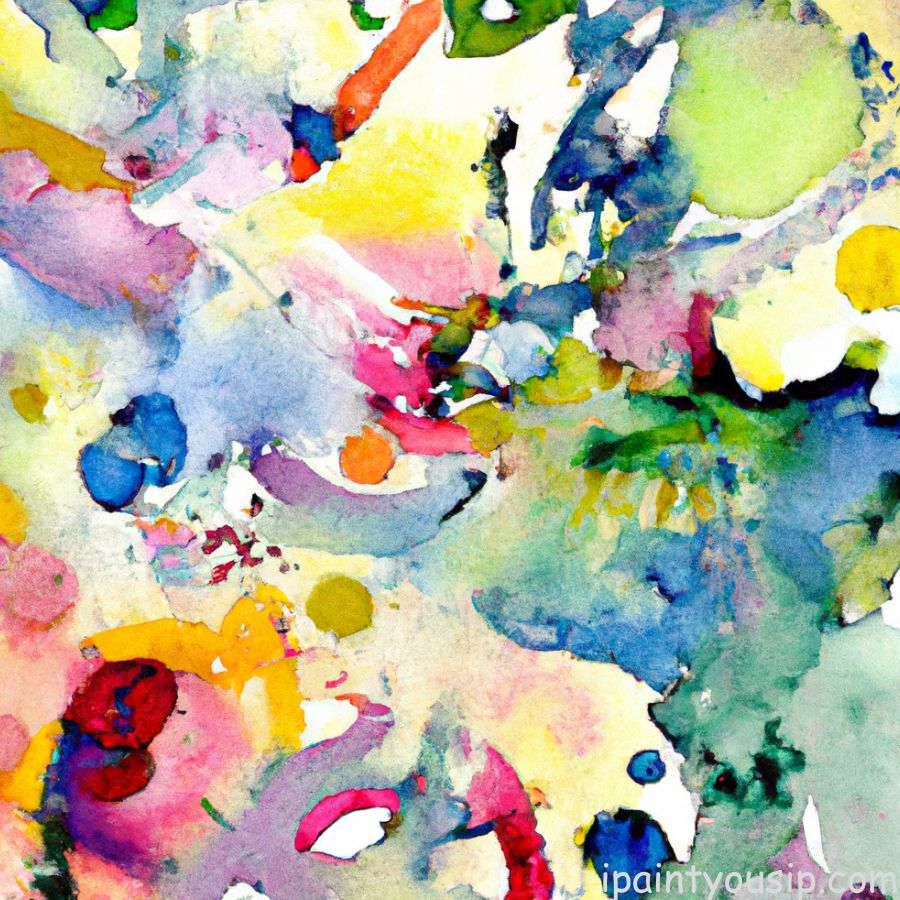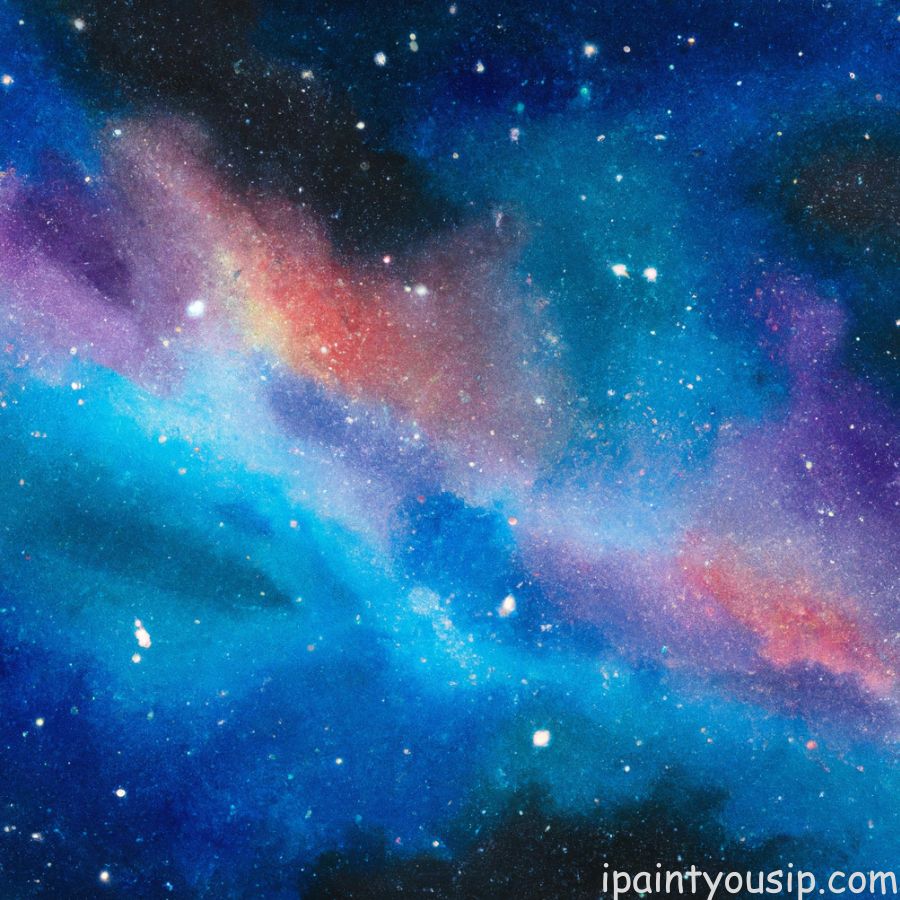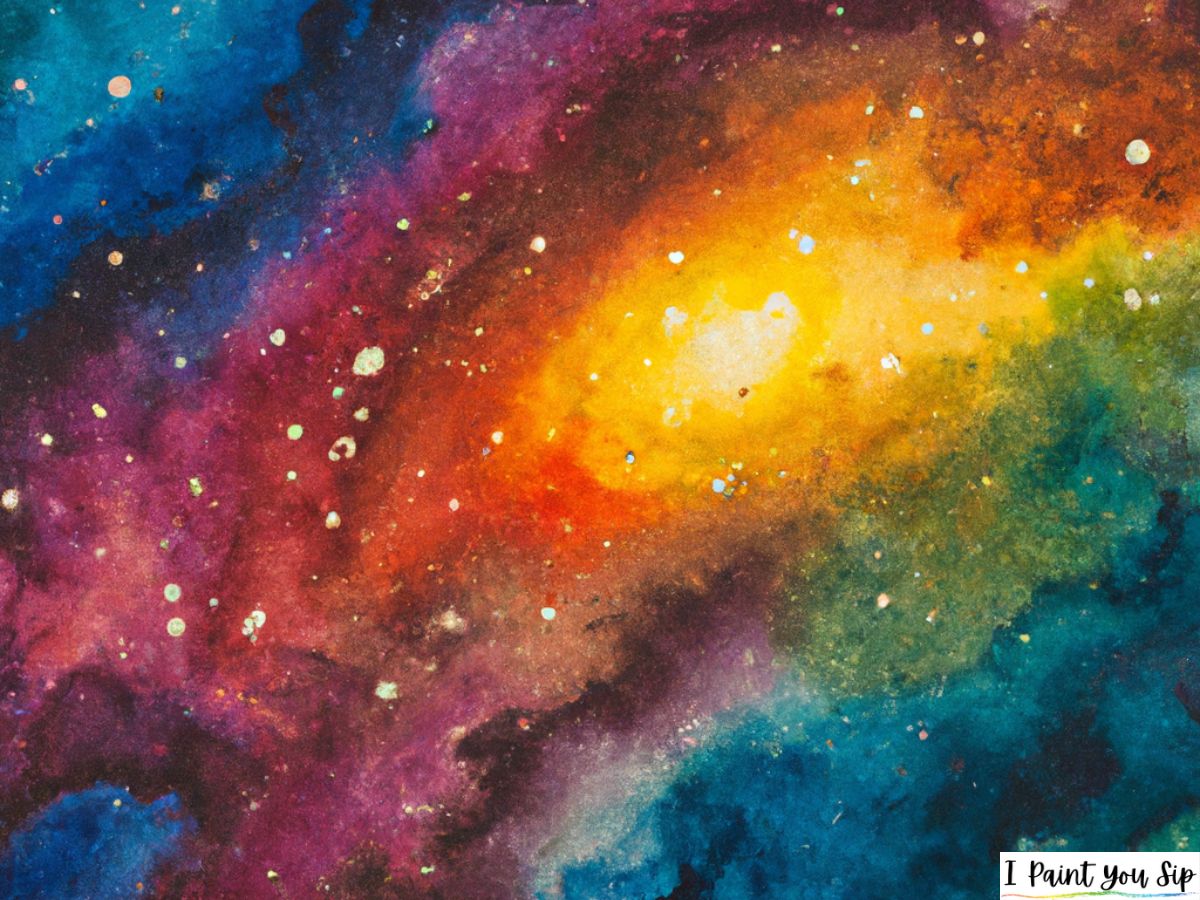For most beginner paint and sip parties, I tend to teach acrylic painting techniques. Occasionally, however, some people request that I teach watercolor techniques.
Watercolors are great for artists of all levels, and there are some awesome painting ideas for beginners. Before I started using acrylic paints I was using watercolors.
Some of my favorite subjects to paint with watercolors include simple flowers, leaves, abstract designs, and rainbows. We will talk about all of these ideas and more in this article.
If you are ready to dive into watercolors, keep reading to learn more.
Art Supplies You Will Need
Before you begin any type of painting it is a good idea to make sure you have all of the supplies you will need. Set everything up so that it is all within easy reach while you are painting.
The most important of these supplies will be your watercolor paints. I suggest starting with an inexpensive set of pan paints.
You will also need to have some watercolor paper. If you don’t want to be bothered with stretching the paper, I advise using 140-pound (or higher) heavy watercolor paper.
You will also need masking tape or painter’s tape to hold the paper in place and keep it from warping too much.
Any inexpensive set of brushes from an art supply store or even a dollar store will do the trick nicely. You will need flat brushes, fan brushes, round brushes, and liner brushes.
You don’t need an easel for watercolor painting, but you will need a flat surface to work on. I usually use a piece of plywood or chipboard.
You should also have a pencil and an ultra-fine felt-tipped pen. I’ll tell you why shortly.
Finally, you will need water. To make things easier, use two large jugs. Fill one jug with water and leave the other one empty. As the water in your cup gets dirty, dump it into the empty jug and refill it with clean water.
Simple Watercolor Ideas for Beginners
Once you have all of your supplies ready, it is time to start creating with watercolor paints. This is so much fun, and there are so many ways you can bring a watercolor painting to life.
It is always best to start with simple designs and then you can work your way up to bigger scenes, portraits, and more. Make sure you tape the paper to a flat surface to keep the paper from warping too much.
Let’s take a look at some of my favorite easy watercolor paintings for beginners.
#1. Wash and Pen Flowers
Wash and pen flowers are an easy way to create flowers without having to fuss with a lot of painting details. The details will be done with the felt-tipped pen that I talked about earlier.
You can create a light wash of color for the background, or simply leave the background white. When painting these flowers I like to use a white background and let the flowers speak for themselves.
The first step is to sketch out some basic outlines for your flowers, stems, and leaves. Next, wet the paper with a bit of water. A spray bottle set on “mist” is ideal for this purpose.
While the paper is still wet, dip a brush in water (the size will depend on how large your flowers are). Rub the brush into the paint, remembering to go with the lightest shade first and work into darker colors.
Fill in the areas where you want to have color. It doesn’t matter if the color bleeds a little bit. It can make your flowers look quite pretty. Paint all of the flowers and leaves.
Once the painting is dry (which should only take a few minutes), it is time to use the felt-tipped pen. Draw the outlines of the petals, leaves, and stems.
#2. Abstract Designs

Abstract designs are easy to create, and this is a great way to get used to using various techniques and brush strokes.
Use a pencil to draw some simple geometric shapes. I like to use a variety of shapes, including circles, squares, and triangles.
If you want a background color, now is the time to do it. Create a wash just like you did for the wash and pen flowers.
When the paper is dry, start adding some color to the shapes. If you want the colors to bleed outside of the lines, you can start painting while the paper is still wet.
#3. Rainbows
Rainbows are easy to draw and paint, and an ideal subject for beginner watercolor artists. You can choose to separate each color with a felt-tipped pen, but I prefer to let the colors run into one another.
Start by creating a wash of light blue all over the watercolor paper. Use a wet-on-wet technique for this.
Lightly wet the paper, either with your brush or with a spray bottle. Wet the flat brush and dip it into the first color of your rainbow.
In one fluid motion, create an arc with the first color of your rainbow. While the paint is still wet, do the same thing with the next color.
Continue doing this until you have all of the colors you want for your rainbow. Keep in mind that the more colors you use the larger your rainbow will be.
If you are using a small piece of watercolor paper, I suggest only using three or four colors. If you are using a sheet that is at least 11X14 inches, you might want to use all of the colors of the rainbow.
Depending on how large you want your rainbow to be, it is best to use either a one-quarter or a one-half-inch flat brush.
#4. Galaxy Watercolor Painting

It is easy to create a galaxy painting with watercolors. Wet the paper with a brush or a spray bottle, and start painting on the wet paper.
Add a splash of blue here, a splash of purple there, and even some pink. Let the colors run into one another all over the paper.
To finish your galaxy painting, put some white gouache or acrylic paint on a toothbrush, and sprinkle some stars onto the paper.
Conclusion
Watercolor paints are ideal for beginners. You can paint in a loose style and add fine details with a fine-tipped pen, or use less water to paint in a tighter style and add details with the paint.
Play around with different techniques and brushstrokes to see what you can come up with. Then, check out some YouTube watercolor painting tutorials for more fun ideas for beginner paintings.
Check my guide on watercolor tips and watercolor on wood for more details.
Sari Green is a semi-professional artist and professional writer. She has been hosting paint & sip parties for the past couple of years, and truly enjoys helping other people to create their very own masterpieces. She loves to create, and you never know what she’s going to come up with next!

